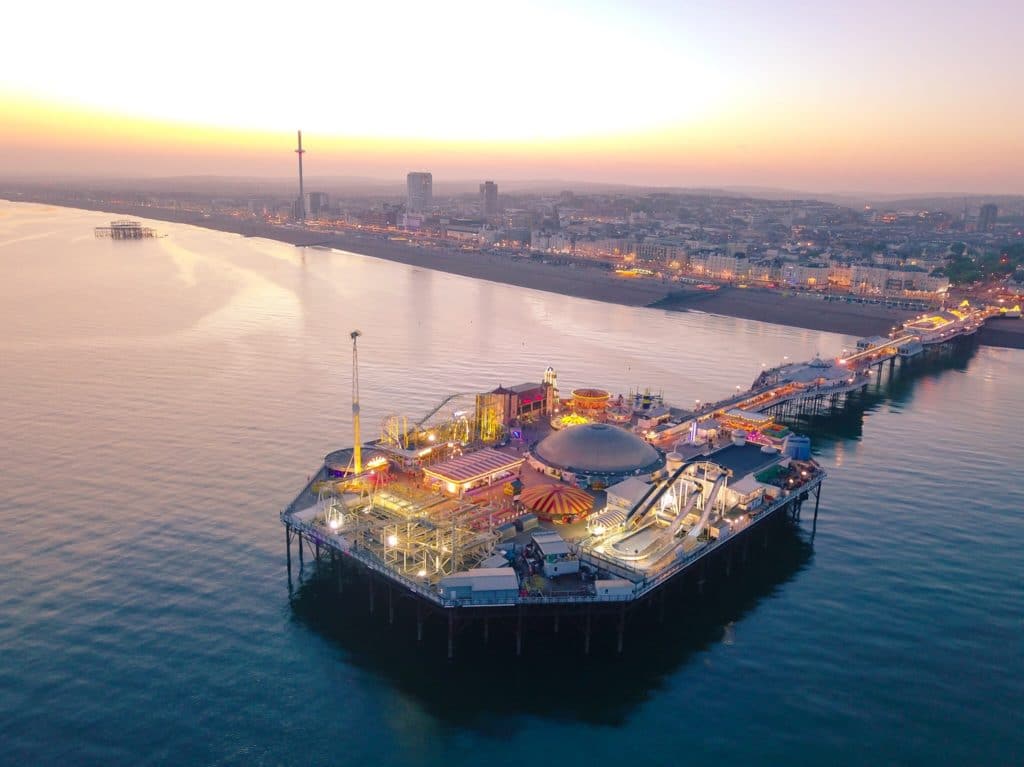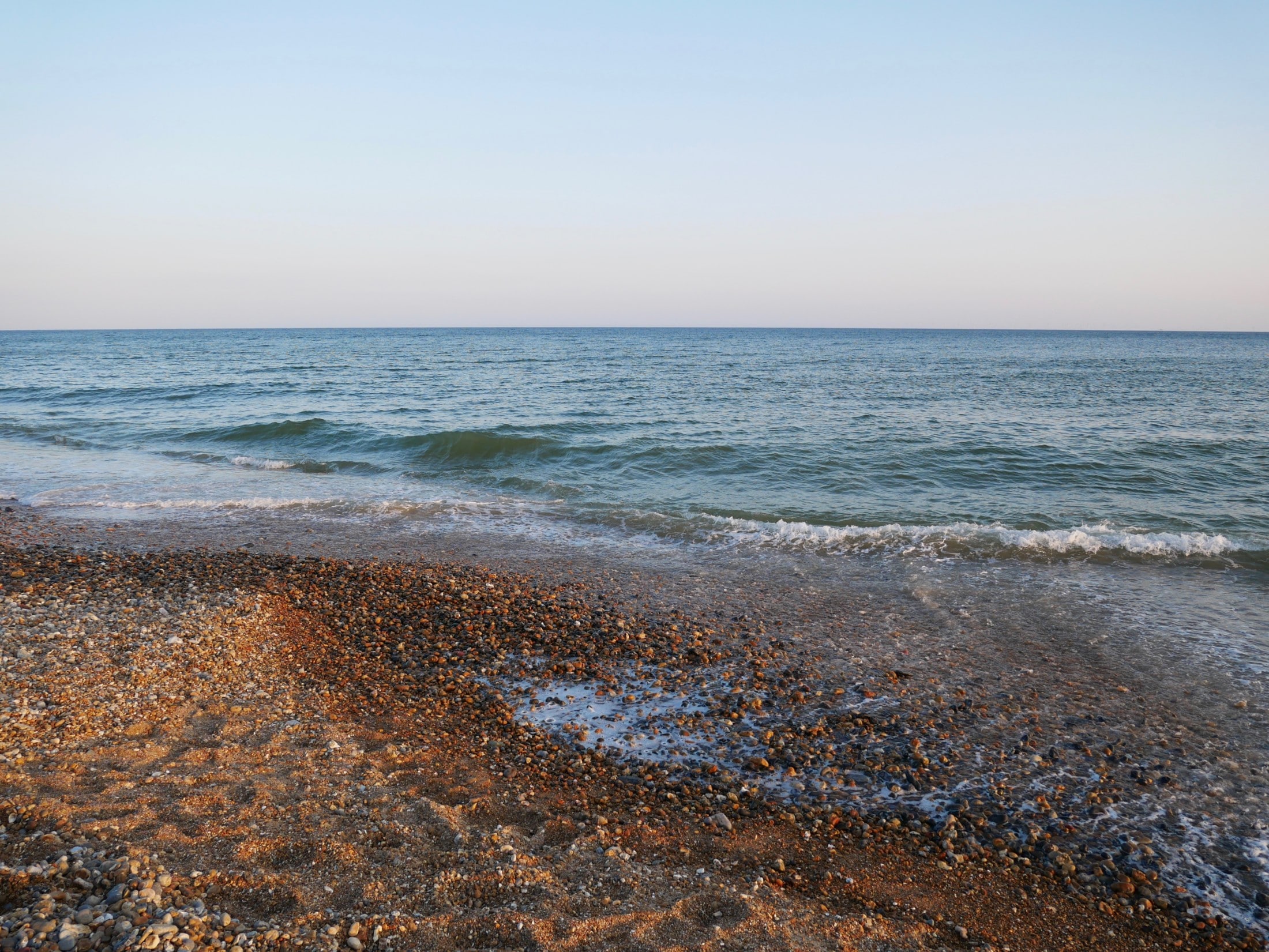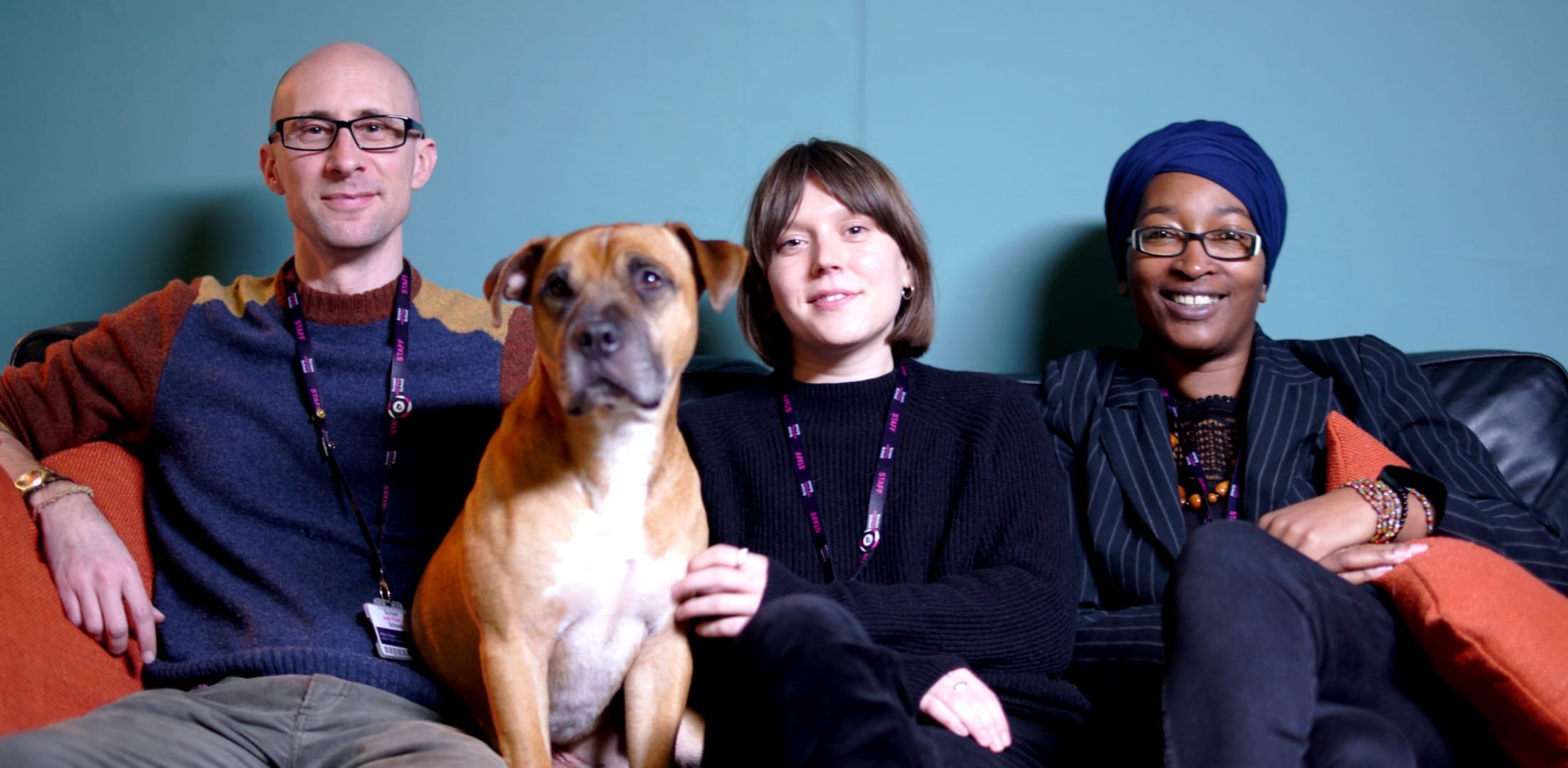As part of our Brighton Life series, this week we’re taking a look at the many faces of Brighton Beach – an iconic and inspiring location right on our doorstep.
What’s happening with the British weather this month? April was the sunniest, but also the frostiest on record, whilst May has been one of the wettest, with yellow weather warnings popping up across Wales and the south of England. Much of what makes our home so vibrant and dynamic can be attributed to our seafront location and the shifting patterns of what occurs just offshore as well as on land. The weather: it’s always a conversation starter, isn’t it? Here’s a short conversation about some of the many faces of our beach…
Screen and Film School Brighton sits across four sites in the very heart of our coastal city, a city which forms a corridor between the English Channel chasm to the south and idyllic hills of the South Downs above us to the north. Brighton differs from other Sussex towns and the South East of England as a whole because of its unique placement and close proximity to the sea. Its reputation for having its own microclimate is not without good reason: in summer, the temperature is generally mild, although we’re a little more sheltered from the intense heat waves that can sometimes occur across London. Conversely, winter never bites too hard and snow is so rare because of the high humidity and fairly frequent rain.

Photo by Hugo Healy
All of this makes for an ever-changing canvas, on which we can sketch out ideas, musings, hopes and perhaps sometimes regrets. It’s a constant inspiration for artists, writers, and of course, filmmakers. Most recently, ITV filmed Grace here; a TV adaptation of the work of Peter James, a friend of ours at Screen and Film School Brighton. The promenade, lapping breakers and foreboding skylines became their own characters, and helped to move the plot along. The overhead shots of our pebble beach were particularly striking – filmed during the colder months and whilst in and out of lockdowns, devoid of crowds, the incoming waves seemed to speak of imminent mood shifts and changing tones to the story.
We spoke to Peter James himself recently, on the subject of our famous coastline the master crime writer had this to say:
“For me, the defining image of Brighton and Hove has always been one that shifts with the moods of the sea. One day, the roiling, angry, storm waves bursting over the walls of the Rottingdean undercliff walk, and the Hove promenade railings, beneath a matching dark sky, shrouding the entire facade of the city, from Kemp Town to Shoreham, with brooding menace, taking us back to the criminal undertow that has been part of this city’s beating heart for a century and a half. Another day, low tide, blue sky, the city basking in sunshine, vibrant yet calm, a city at peace. Low tide, a few fishermen out on the damp mud looking for the lugworm casts; the detectorists looking for their fortunes. A city where nothing bad could happen on a day like this, could it? We like to delude ourselves…”
Skip forwards a few months to the present day, stroll along the long stretch of shale which helps to divide land and sea, and you will be witness to a regenerated area between both piers which incorporates new eateries at the brilliantly reimagined Shelter Hall, as well as a row of familiar bars and clubs who have all adapted their seating and overall offering to suit the latest safety measures with complete aplomb. On the few sunny days we have had so far this spring the always delightful Brighton Music Hall has serenaded passing crowds from a new stage position, which is now even closer to the sea; local singers stand signalling better things to come and brighter times. Long sections of walkways, walls and architecture which help to make up the promenade have also been tastefully restored – after years of work – just in time for the cautious but hopeful summer frenzy. All of this amounts to the seafront truly flexing its salty muscles and positively showing off.
Heading west towards Hove and the ultra-modern i360 tower provides a stark visual contrast with the dramatic sight of the burnt down West Pier. That rusty relic is an ever present to passersby, and a favourite of photographers and social media influencers. Following a catastrophic arson attack in 2003, and an unfortunate failure to secure funding to resurrect the crumbling remains, the tangled spires and half-snapped spikes still stand – shipwrecked and out to sea. Now a resting place for sentinel seabirds and a favourite stop off for water sports enthusiasts. Its icon is firmly secure amongst Brighton residents, and will remain so until it is lost to the corrosive waves forever or bureaucracy calls for it to be pulled down. For now, we can still marvel at the mini soap operas which take place underneath, within and on top of it every day. As well as the romance it conjures up for onlookers back at the shoreline.
One of the many faces and shades of our beach. There are so many to explore, summer is on its way and the (often talked about) British weather looks to be improving. Time to grab your deckchairs and cameras.
Are you ready to tell your story?
Sign up to one of our Open Days:
Find out more information on our courses by clicking below:
Explore our Virtual Events:



